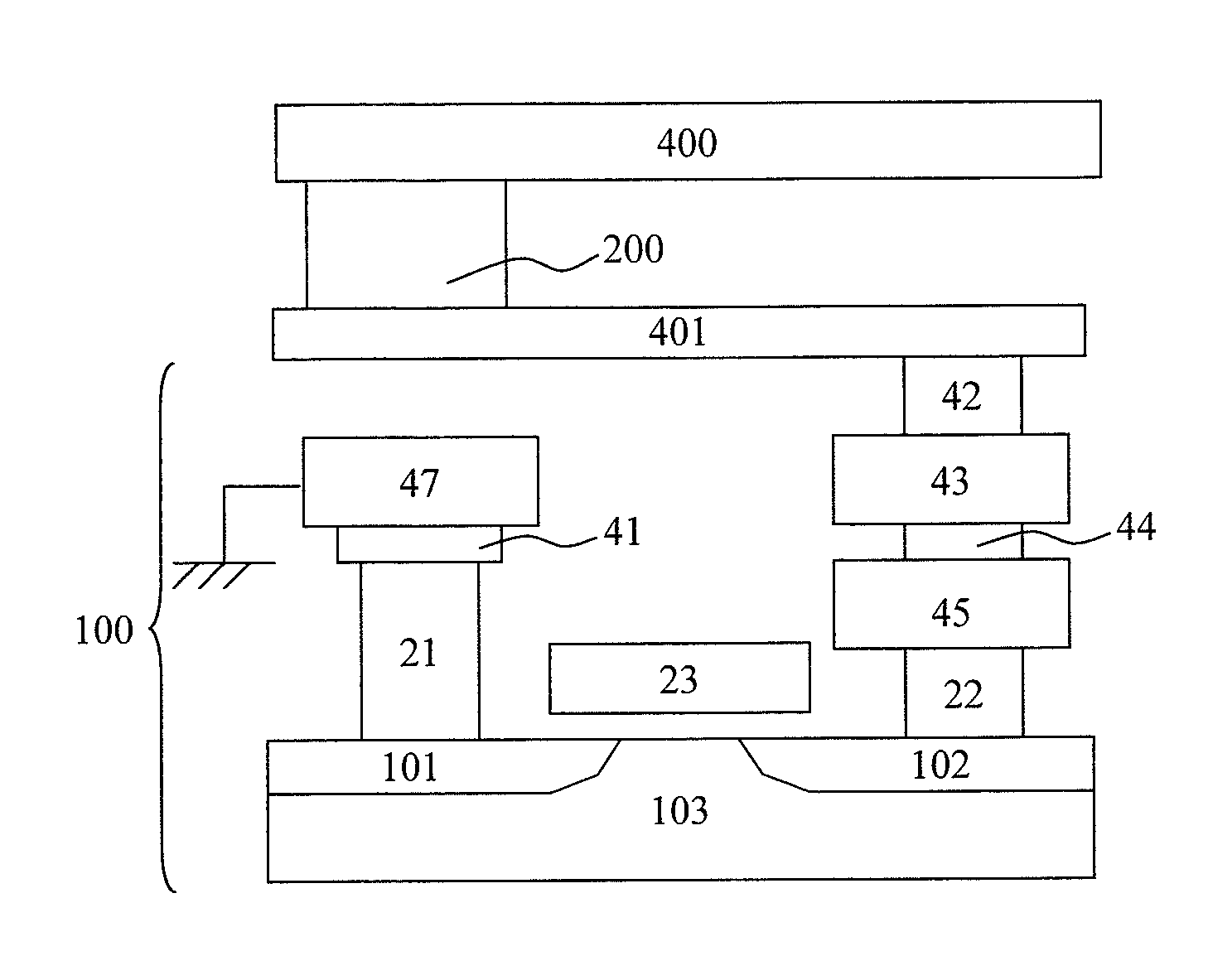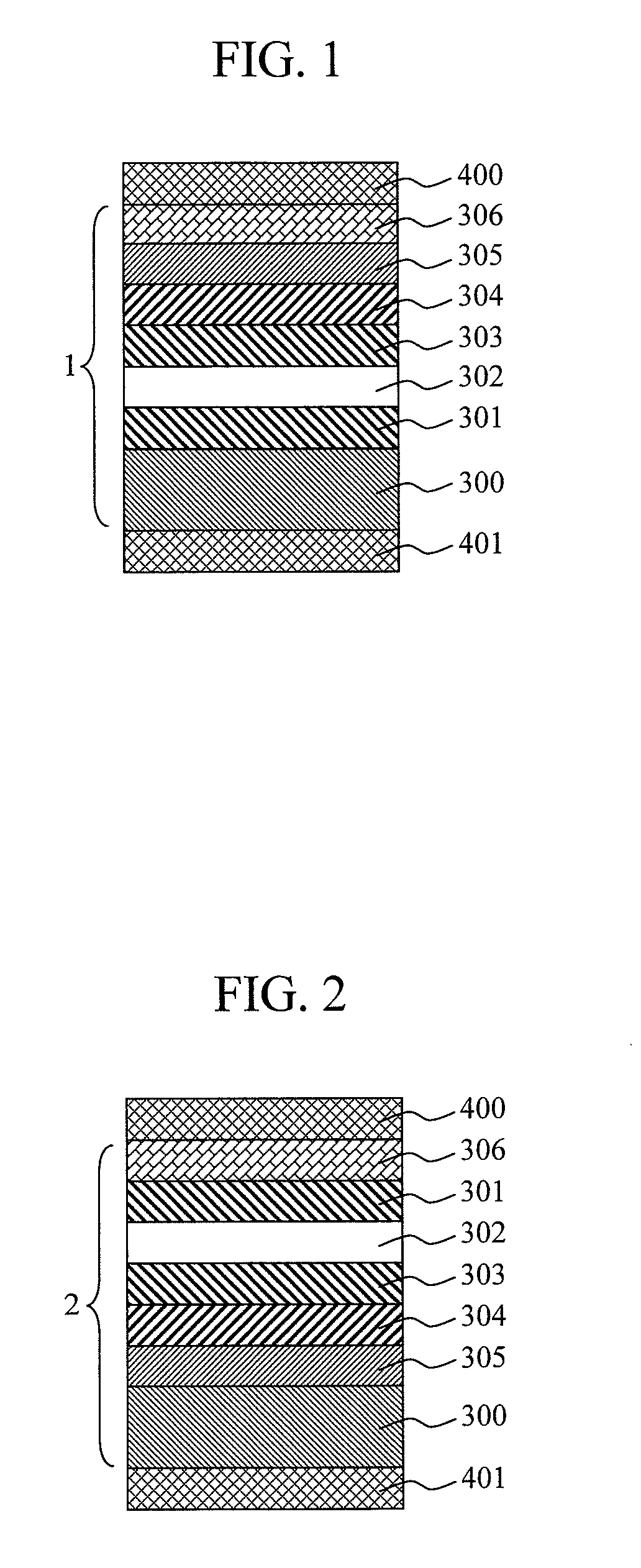Magnetoresistive Element, Magnetic Memory Cell and Magnetic Random Access Memory Using the Same
a magnetic memory cell and random access memory technology, applied in the field of tunnel magnetoresistive elements, and low-power consumption, non-volatile magnetic memory, to achieve the effect of long retention time of magnetic information and high thermal stability
- Summary
- Abstract
- Description
- Claims
- Application Information
AI Technical Summary
Benefits of technology
Problems solved by technology
Method used
Image
Examples
embodiment 1
[0064]FIG. 1 is a schematic cross sectional view showing an example of a tunnel magnetoresistive element according to the present invention. The tunnel magnetoresistive element of this embodiment is manufactured using a sputtering method. Furthermore, by means of a lithography using a combination of an electron beam lithography system and a stepper, a tunnel magnetoresistive film 1 having a dimension of 100×200 nm2 is manufactured in order to implement the spin-transfer torque magnetization reversal. The tunnel magnetoresistive film 1 comprises an orientation control layer 300, a ferromagnetic pinned layer 301, an insulating barrier layer 302, a ferromagnetic free layer 303, an insulating layer 304, a nonmagnetic conductive layer 305, and a protective layer 306. Electrodes 400, 401 are respectively provided in contact with the upper and lower sides of the tunnel magnetoresistive film 1 to constitute the tunnel magnetoresistive element.
[0065]Next, a method of writing and reading info...
embodiment 2
[0083]FIG. 3 and FIG. 4 are schematic cross sections showing tunnel magnetoresistive elements provided with a tunnel magnetoresistive film 3 and a tunnel magnetoresistive film 4 according to the present invention. The tunnel magnetoresistive film 3 shows a structure, in which an antiferromagnetic layer 307 is provided between the orientation control layer 300 and the ferromagnetic pinned layer 301 on the basis of the structure of the tunnel magnetoresistive film 1, and the tunnel magnetoresistive film 4 shows a structure, in which the antiferromagnetic layer 307 is provided between the ferromagnetic pinned layer 301 and the protective layer 306 on the basis of the structure of the tunnel magnetoresistive film 2, respectively. The layer structure of the tunnel magnetoresistive element of this embodiment and the material and thickness of each layer are the same as those of Embodiment 1 except the antiferromagnetic layer 307.
[0084]The antiferromagnetic layer 307 of this embodiment is u...
embodiment 3
[0086]FIG. 5 and FIG. 6 are schematic cross sections showing tunnel magnetoresistive elements provided with a tunnel magnetoresistive film 5 and a tunnel magnetoresistive film 6 according to the present invention. The tunnel magnetoresistive film 5 has a structure, in which the ferromagnetic pinned layer 301 comprises a first ferromagnetic layer 3011, a first nonmagnetic layer 3012, and a second ferromagnetic layer 3013 on the basis of the structure of the tunnel magnetoresistive film 3. On the other hand, the tunnel magnetoresistive film 6 has a structure, in which the ferromagnetic pinned layer 301 comprises the first ferromagnetic layer 3011, the first nonmagnetic layer 3012, and the second ferromagnetic layer 3013 on the basis of the structure of the tunnel magnetoresistive film 4. The layer structure of the tunnel magnetoresistive element of this embodiment and the material and thickness of each layer are the same as those of Embodiment 2 except the ferromagnetic pinned layer 3...
PUM
 Login to View More
Login to View More Abstract
Description
Claims
Application Information
 Login to View More
Login to View More - R&D
- Intellectual Property
- Life Sciences
- Materials
- Tech Scout
- Unparalleled Data Quality
- Higher Quality Content
- 60% Fewer Hallucinations
Browse by: Latest US Patents, China's latest patents, Technical Efficacy Thesaurus, Application Domain, Technology Topic, Popular Technical Reports.
© 2025 PatSnap. All rights reserved.Legal|Privacy policy|Modern Slavery Act Transparency Statement|Sitemap|About US| Contact US: help@patsnap.com



